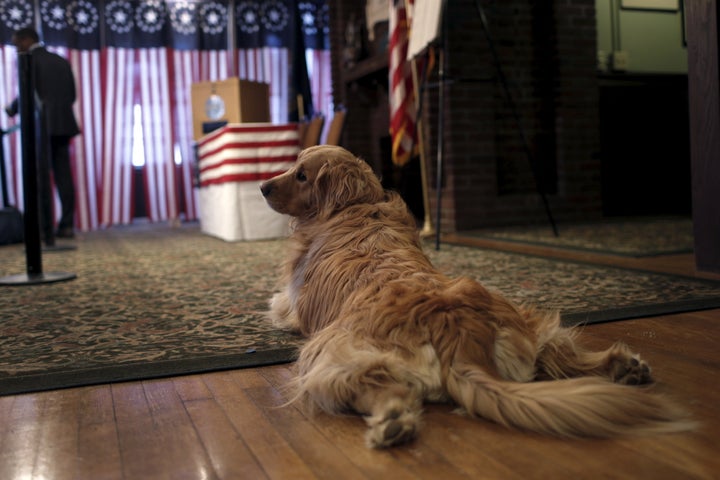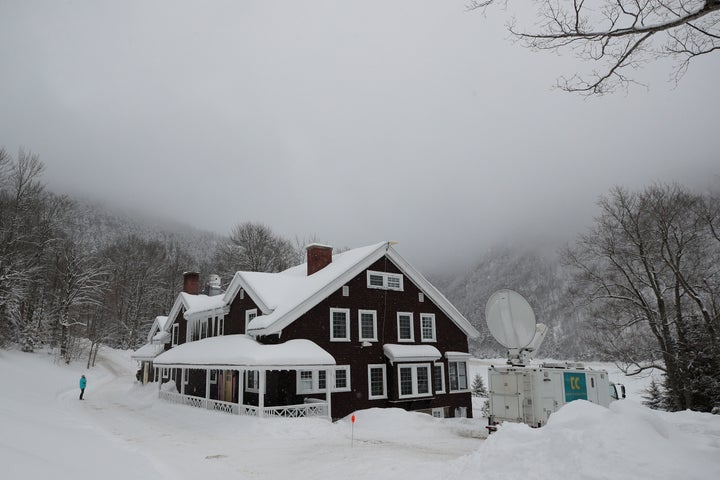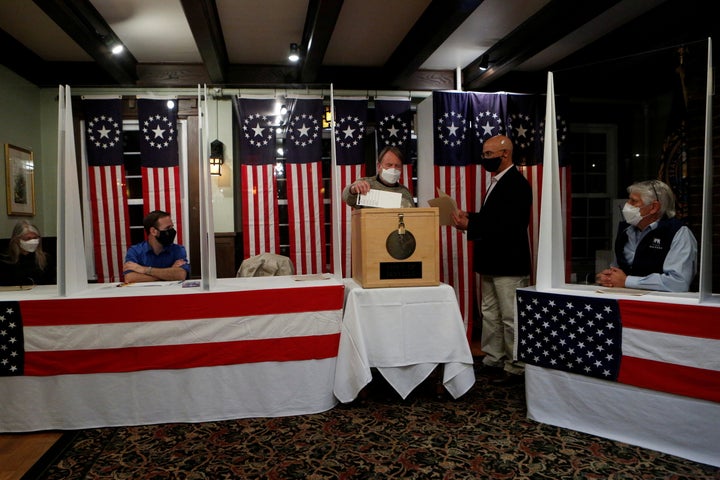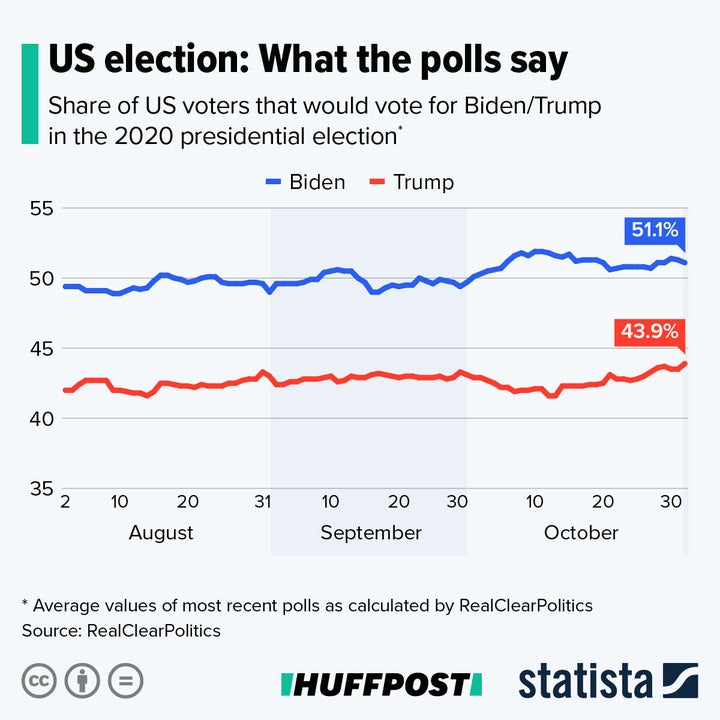Two small communities in the state of New Hampshire have upheld a long-standing tradition by being the first to cast and count their ballots in the US presidential election.
The results in Dixville Notch, near the Canadian border, were a sweep for former vice president Joe Biden who won the town’s five votes.
In Millsfield, 12 miles to the south, President Donald Trump won 16 votes to Biden’s five.
A third community with midnight voting, Hart’s Location, suspended the tradition this election because of coronavirus concerns.

Fans of The West Wing will be familiar with the quirky voting tradition of the towns in question with an episode in Season 3 featuring the fictional community of Hartsfield’s Landing in place of Dixville Notch.
There would normally be a big spread of food and a lot of media crammed into a small space to watch the voting, Tom Tillotson, town moderator in Dixville Notch, said last week. But that is no longer possible because of the coronavirus pandemic.
It is also hard to observe the 60th anniversary of the tradition which started in November 1960, the election in which John F Kennedy defeated incumbent Vice President Richard Nixon.
“Sixty years – and unfortunately, we can’t celebrate it,” he said.
The White Mountains town started the early voting in 1948 to accommodate railroad workers who had to be at work before normal voting hours.
It eventually stopped in 1964 but brought it back in 1996.

Unfortunately for anyone wanting to get a hint of how today’s election might go will have to wait a bit longer – the number counted in New Hampshire are far too small to make any general predictions.
In 2016, Hillary Clinton secured four votes in Dixville Notch, while Trump took two.
However the first vote cast in the tiny town is being held by some as a glimmer of hope for Biden fans:
More than 98 million early votes had already been cast in person or by mail as of Monday night, according to the US Elections Project at the University of Florida, a record-setting pace fuelled by intense interest in the high-stakes election and concerns about voting in person on Election Day during a pandemic.

The number is equal to about 71.4% of the entire turnout in 2016 and represents about 40% of all Americans who are legally eligible to vote.
Trump, 74, is seeking another four years in office after a tumultuous first term marked by the coronavirus crisis, an economy battered by pandemic shutdowns, an impeachment drama, inquiries into Russian election interference, US racial tensions and contentious immigration policies.
Biden, 77, is looking to win the presidency after a political career spanning five decades including eight years as vice president under Trump’s Democratic predecessor, Barack Obama.
He mounted unsuccessful bids for the Democratic presidential nomination in 1988 and 2008.
Trump’s deficit in opinion polls has been driven in part by public disapproval of his handling of the pandemic.

He has repeatedly played down the threat, promising the crisis will end soon and urging a quick reopening of schools and businesses, prompting Biden to accuse him of “surrendering” to the virus.
The two candidates have focused on about a dozen competitive state battlegrounds, nearly all states that Trump won in 2016. Much of their attention has gone to Pennsylvania, Michigan and Wisconsin, the three traditionally Democratic states that Trump narrowly won in 2016, propelling his upset victory over Clinton.
If Biden can hold all of the states that Clinton won in 2016 and pick up Wisconsin, Michigan and Pennsylvania, it would be enough to capture the White House.
Polls also show tight races in Florida, North Carolina and Arizona. Florida, with 29 electoral votes, is the biggest must-win for Trump, as a loss there would block most of the president’s viable paths to winning the Electoral College.
Results in Florida, where mail-in ballots can be counted before Election Day, are expected to begin to come in relatively quickly on Tuesday night.
But Pennsylvania, Michigan and Wisconsin will not begin counting the flood of mail ballots until Election Day, raising the possibility of a prolonged vote count that could stretch for several days.
